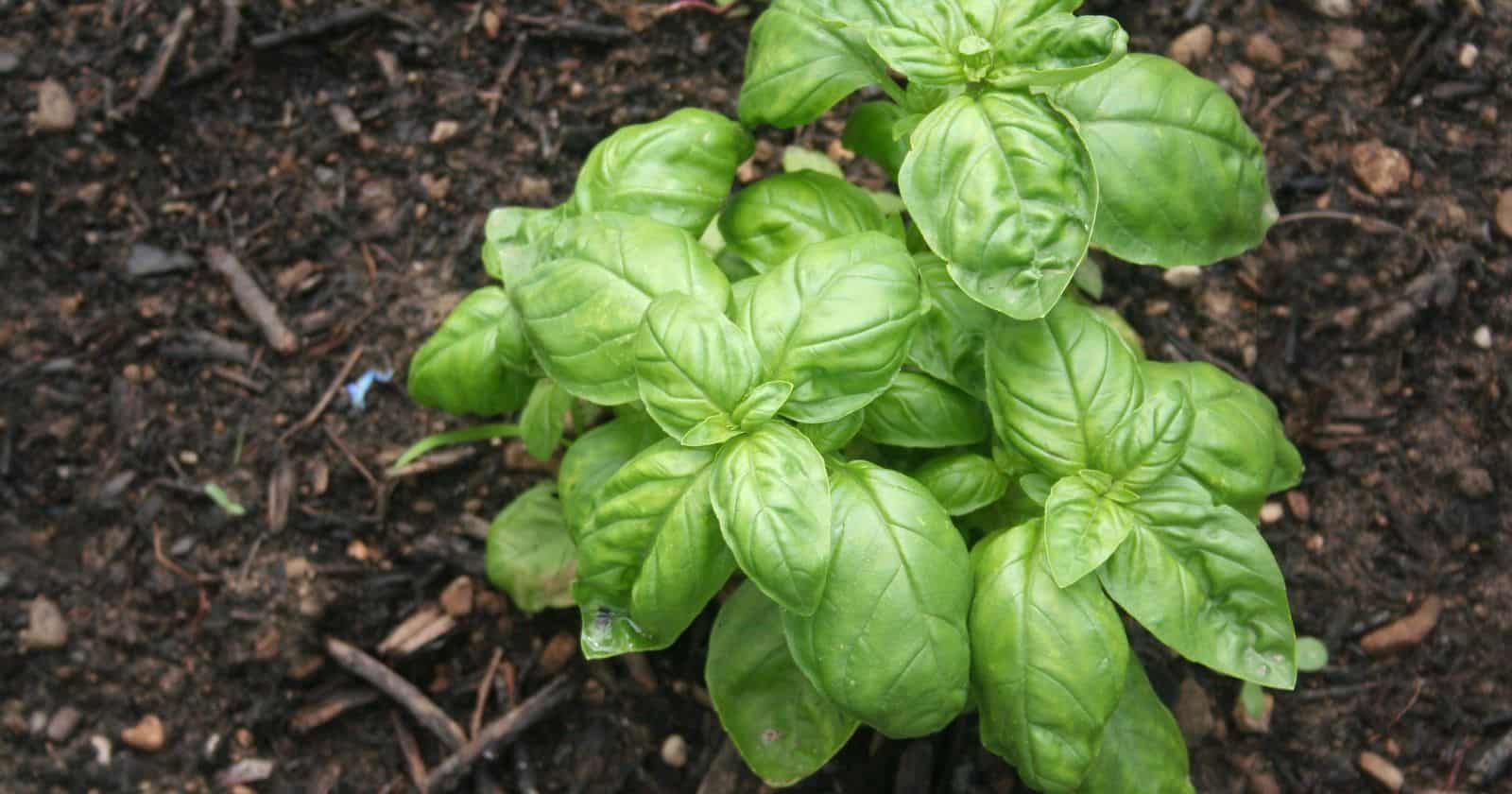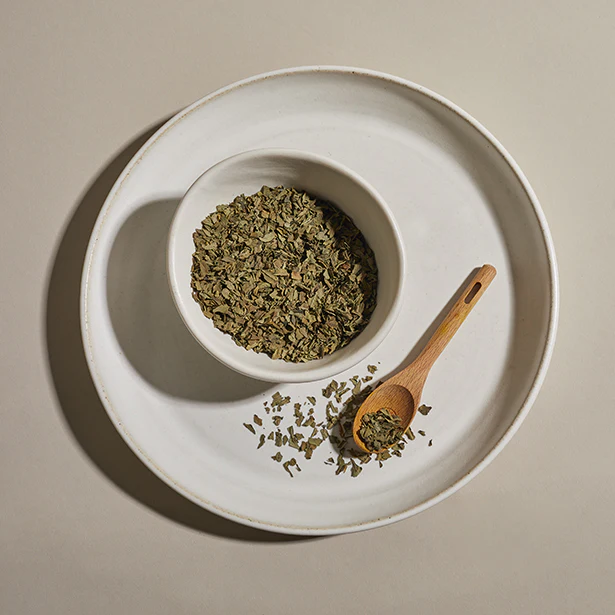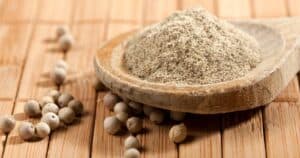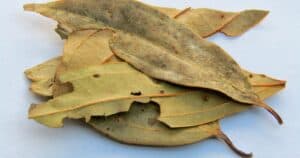Basil is one of the most beloved and versatile herbs that belong in every kitchen.
Not only is it used to flavor countless dishes around the world, but it’s also valued for its storied history and fantastic health benefits.
The popularity of this aromatic herb spans centuries, with references ranging from ancient Greek medical texts to its prominent use in Italian cooking.
The vibrant basil greens make a beautiful addition to any dish, but did you know more than 60 varieties are available?
Each type has its unique flavor profile ranging from the sweet licorice taste of Thai basil to the slightly peppery notes in lemon basil.
Whether adding depth of flavor or just accentuating the food’s presentation, basil won’t disappoint!
Moreover, centuries-old practitioners have long used this herb for medicinal and therapeutic purposes, such as relieving minor pain or reducing inflammation.
And when do you want your well-loved leaves to last longer? Look no further than our tips on storing and preserving them!
What is Basil?
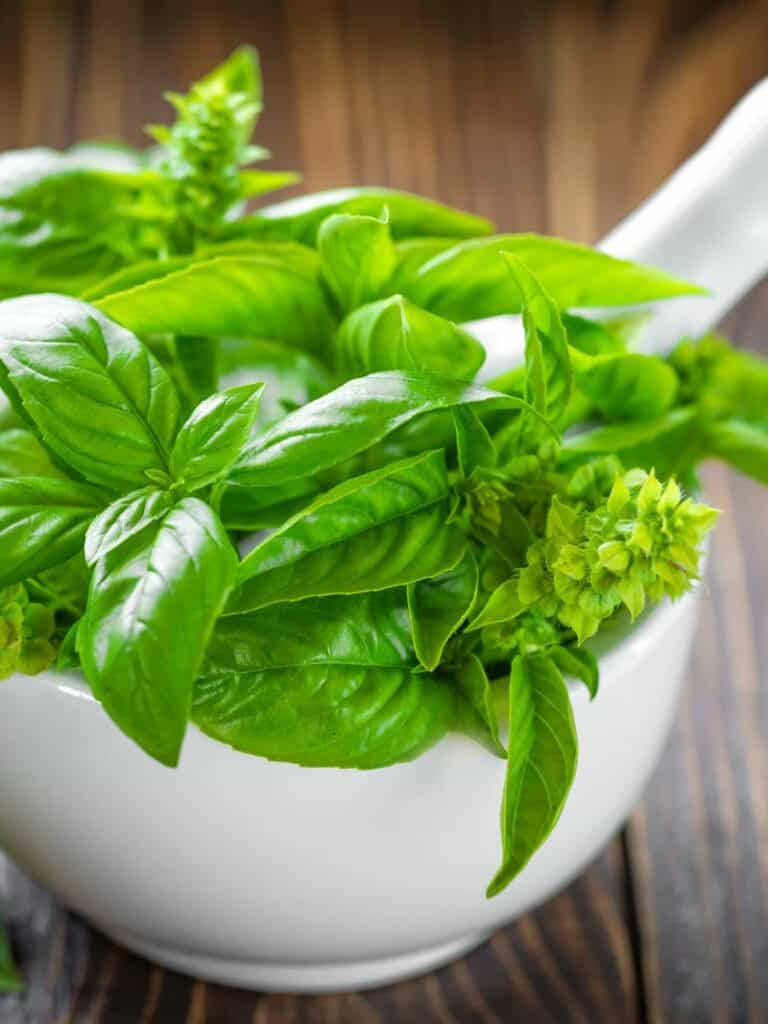
Basil has been an herb used in cooking and medicine for centuries. It is a member of the mint family, or Lamiaceae family, and other culinary herbs like rosemary, sage, and even lavender.
It is believed that basil originated in India and is most commonly used in Italian cuisine and Asian dishes.
Sweet basil is native to the tropical regions of Africa and Asia and has a sweet aroma and flavor.
Basil can be used for many medicinal purposes, such as stomach problems like indigestion, stomach spasms, loss of appetite, intestinal gas, gallstones, worm infections, fluid retention, head colds, warts, and stress.
The parts of the plant that grow above the ground are used to make medicine.
Holy basil (Ocimum tenuiflorum), also known as tulsi, has been used for medicinal purposes for at least 3000 years in Ayurveda, considered a sacred plant.
Whether using Basil for its culinary or medicinal benefits, this herb can be a great addition to your diet or lifestyle!
Different Varieties Of Basil
Basil is a popular herb that has been used in cooking for centuries. It comes in many different varieties, each with its own unique flavor and aroma.
Here are some of the most common types of basil:
Sweet Basil
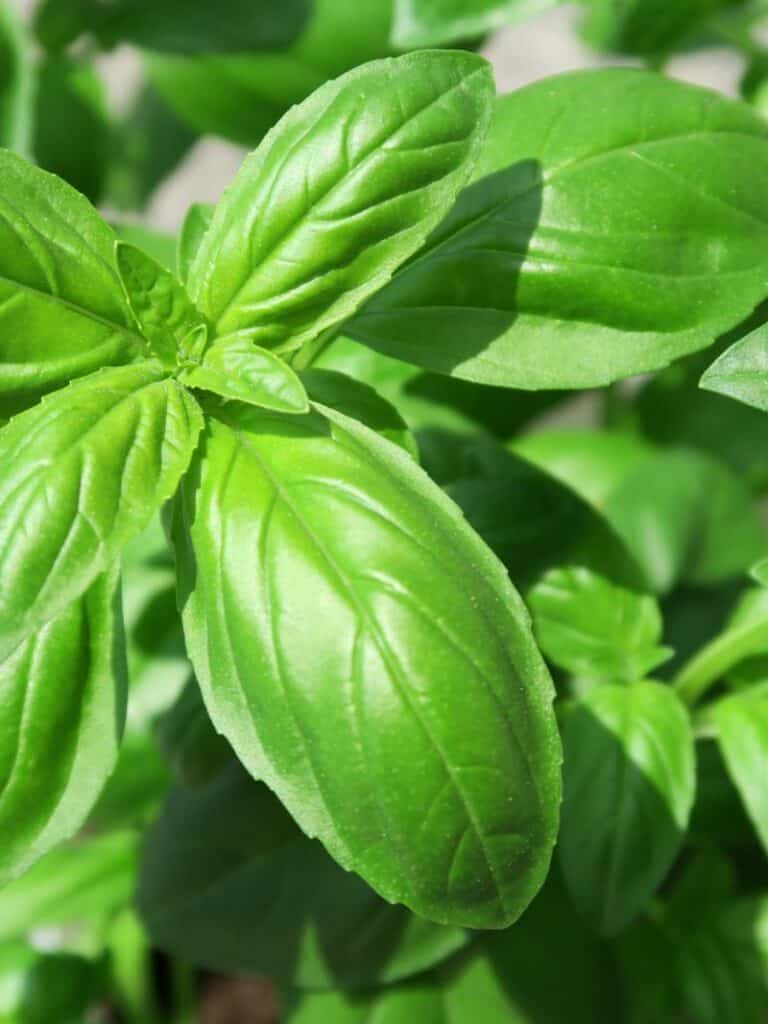
This is the most popular type of basil and has a light, sweet flavor. It is commonly used in salads, sauces, and pesto dishes.
Lemon Basil
This variety has a lemony taste and scent that is great for adding to fish, chicken, and vegetable dishes.
Greek Basil
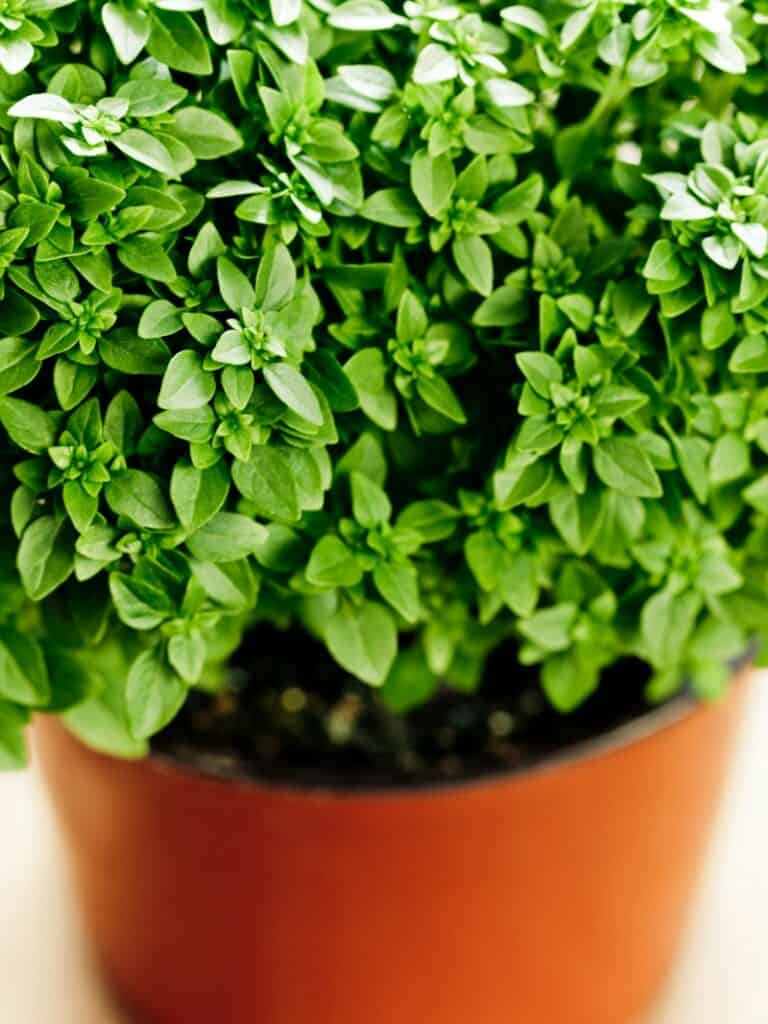
This basil has a solid anise-like flavor and is an excellent addition to Mediterranean dishes.
Italian Large Leaf Basil
This basil has large leaves and a milder taste than other types of basil. It is great for adding to soups, stews, and pasta dishes.
Lettuce Leaf Basil
This basil has large, tender leaves that are great for wrapping around food or using as a garnish.
Purple Ruffles Basil
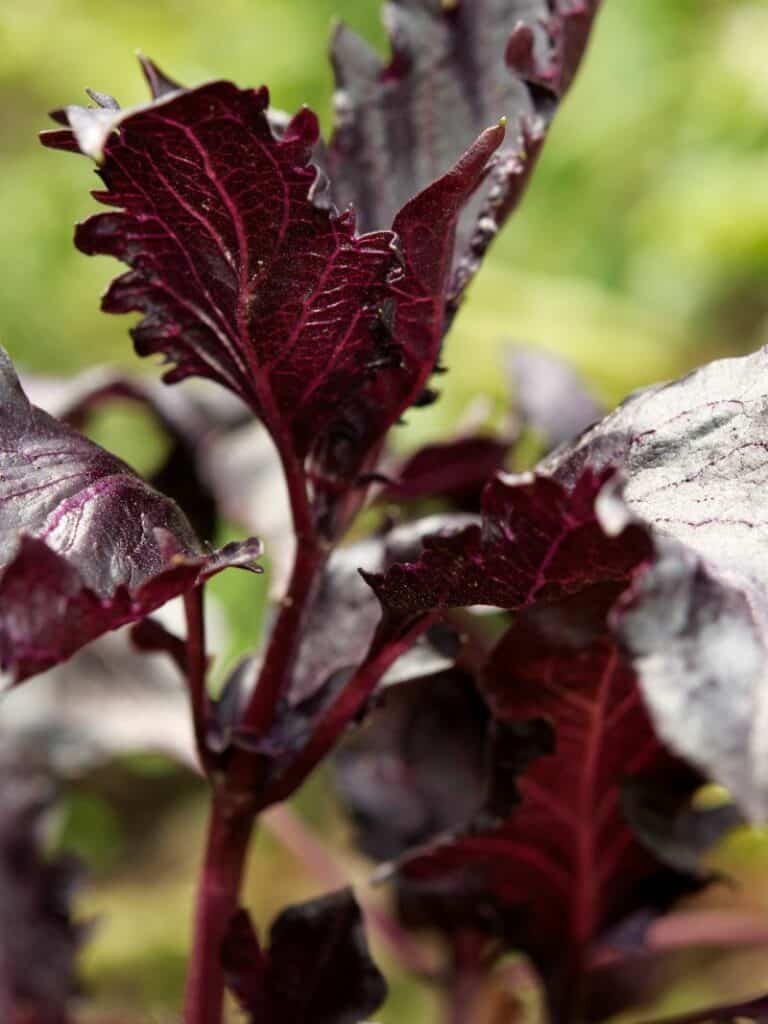
This basil has large purple leaves with a slightly spicy taste. It’s great for adding color to salads and other dishes.
Dark Opal Basil
This basil has large purple leaves with an intense licorice flavor. It is excellent for adding to salads or using as a garnish.
Genovese Basil
This is the most popular variety of basil for making pesto. It has a strong flavor and is excellent for adding to salads, pasta dishes, and other recipes.
Holy Basil
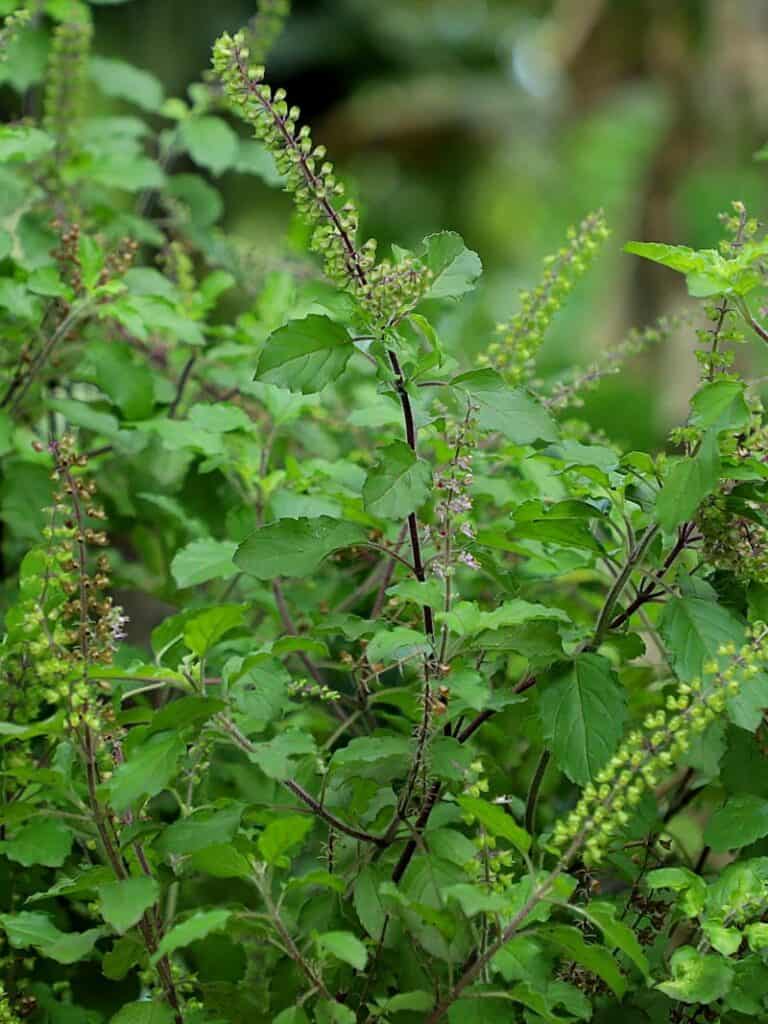
This basil is a sacred herb in India with a flavor similar to cloves. It is commonly used in Indian and Thai cuisine.
Cinnamon Basil
This basil offers subtle hints of cinnamon when cooked or eaten raw. It is great for adding to desserts or fruit dishes.
Lime Basil
This basil has a tangy, citrusy flavor that is great for adding to fish and chicken dishes.
Green Ruffles Basil
This basil has ruffled leaves with a milder flavor than other types of basil. It is great for adding to salads and other dishes.
Dolce Fresca Basil
This basil has a sweet, mild flavor and is great for adding to salads, sandwiches, and other dishes.
Thai Basil
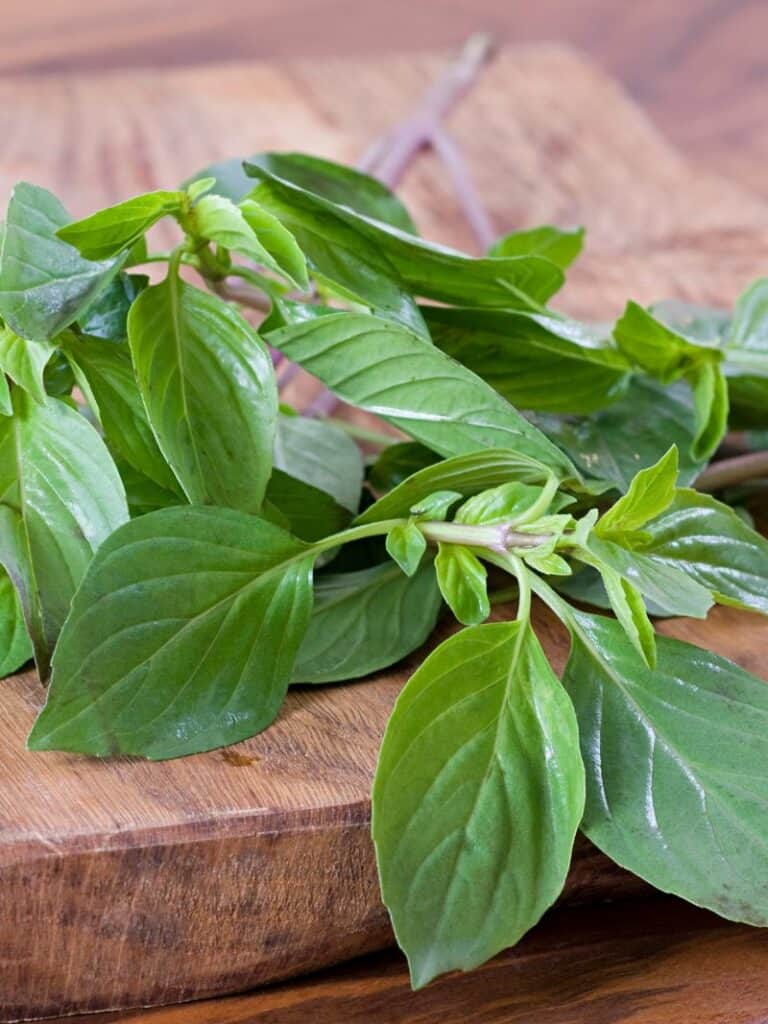
This basil has a strong, spicy flavor that is great for adding to soups, stir-fries, and other dishes.
Historical Significance Of Basil
Basil is an herb with a long history of usage in various cultures. It seems to have originated in India and was brought to the West by merchants of spices.
Basil was first cultivated in Asia and traveled to Egypt, Greece, and Rome. The leaves were often placed in the hands of the dead to ensure a safe journey to the next world.
In Europe, it was introduced from India with similar religious significance as before – used for religious ceremonies and protection against evil forces for those who have passed away.
The religious significance of Basil transcends belief systems as even today, the Greek Orthodox Church uses the same type of Basil to prepare their holy water.
The oldest origin of the word “basil,” according to Oxford English Dictionary (OED), is from the ancient Greek basileus meaning “king,” which further adds weightage to its importance over centuries across different cultures and religions.
Culinary Uses Of Basil
Basil has many culinary uses, from being a main ingredient in pesto to adding flavor to salads, soups, and sauces. It pairs well with tomato, olives, oregano, and garlic.
When growing basil, one problem you might face has too much basil to use before it goes bad.
To make sure it doesn’t go to waste, you can preserve it by freezing or drying the leaves.
Dried basil can be stored in an airtight container for up to six months, while frozen basil will last up to a year if stored properly.
You can also make your pesto with fresh basil leaves and store it in the freezer for later use.
Basil has been cultivated for over 5000 years but remains popular today due to its versatility and unique flavor profile.
It’s easy to grow as long as you have adequate sunlight and water; however, remember that too much of either can damage the plant’s delicate leaves, so be sure not to overwater or leave your plants out in direct sunlight all day long!
Here are some popular dishes that are made even better with the addition of basil:
- Caprese salad: a classic Italian dish made with sliced tomatoes, fresh mozzarella, and basil leaves.
- Pesto pasta: a traditional Italian dish made with fresh basil, pine nuts, Parmesan cheese, and olive oil blended into a flavorful sauce tossed with pasta.
- Tomato sauce: fresh basil leaves can be added to a homemade tomato sauce for flavor.
- Thai curries: basil leaves are a key ingredient in many Thai curries, adding a fragrant aroma and slightly sweet flavor.
- Bruschetta: a classic Italian appetizer made with toasted bread, tomatoes, garlic, olive oil, and fresh basil.
- Margherita pizza: a simple but delicious pizza made with tomato sauce, fresh mozzarella cheese, and basil leaves.
Medicinal And Therapeutic Properties Of Basil
Holy basil, also known as Tulsi, is a herb with medicinal and therapeutic properties. It works by helping your body cope with various stressors—like emotional stress, an infection, or other medical conditions.
Holy basil prevents health disorders like high blood pressure, skin disorders, diabetes, constipation, and cardiac disease.
Basil leaves and seeds are also recommended as a supplemental cancer cure during chemotherapy or radiation therapy.
Basil has anti-inflammatory and anti-microbial properties that can help protect against unwanted bacterial growth. It also aids digestion and acts as an adaptogen to help the body adapt to stressful situations.
Basil can relieve fever, soothe headaches, treat head colds, coughs, stomach spasms, diarrhea, skin problems such as acne and eczema; hair loss; kidney stones; respiratory disorders; and combat stress.
Due to its healing properties, holy basil has been used for centuries in Ayurvedic medicine. If you’re looking for natural remedies to improve your health or manage stress levels, then holy basil could be the answer you’re looking for!
Tips for Storing and Preserving Basil
If you have more basil than you can use, consider drying or freezing it for future use.
Freezing

Remove leaves from the stem, wash and dry them thoroughly, then puree with olive oil before freezing to keep them from drying out.
Salting
Lay leaves between layers of salt in a glass container and leave until desiccated.
Storing stems in water.
Trim the cut ends of the stems and place them upright in a glass jar filled with cold water.
Store basil in the fridge
Wrapped in a damp paper towel and placed in a plastic bag to help keep it fresh for up to one week.
Substitutes for Basil
Mint
An excellent substitute for fresh basil leaves and can be used in most recipes that require basil.
Thyme
Another herb that can be used as a substitute for Basil with its unique flavor.
Oregano
A popular herb that can be used in cooking and provides an aromatic scent when cooked with the right ingredients.
Garlic Powder or Onion Powder
They are perfect substitutes for dried basil and provide similar flavors when added to food.
Parsley Flakes or Oregano Flakes
It can also be used as a substitute for dried basil.
When substituting basil, remember that the herb to use depends on the dish you’re making and your preference for flavor.
Experiment with different herbs until you find one that works best for you!
Where to Buy Basil?
Basil is widely available in grocery stores and supermarkets in the fresh produce section, often sold in small bunches or containers.
It can also be found at farmers’ markets during the growing season. If you’re unable to find fresh basil in your local stores, you may be able to find it at specialty food stores or online retailers.
Dried basil can be found in the
When purchasing fresh basil, look for bright green leaves free from wilting or browning. Avoid leaves that have black spots or signs of mold.
Chefs and mixologists slap their basil to release its sweet freshness.
It pairs perfectly with tomato and garlic but also with gin and vodka.
This dried version of Sweet Basil has many benefits, including that you don't have to slap it.

